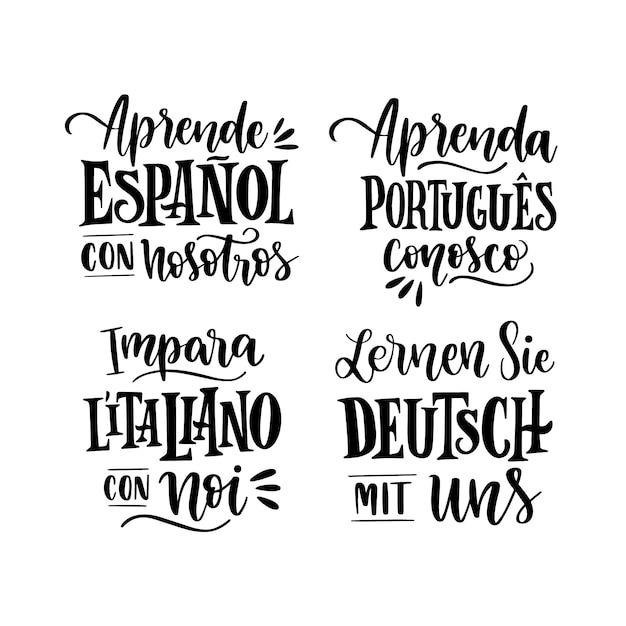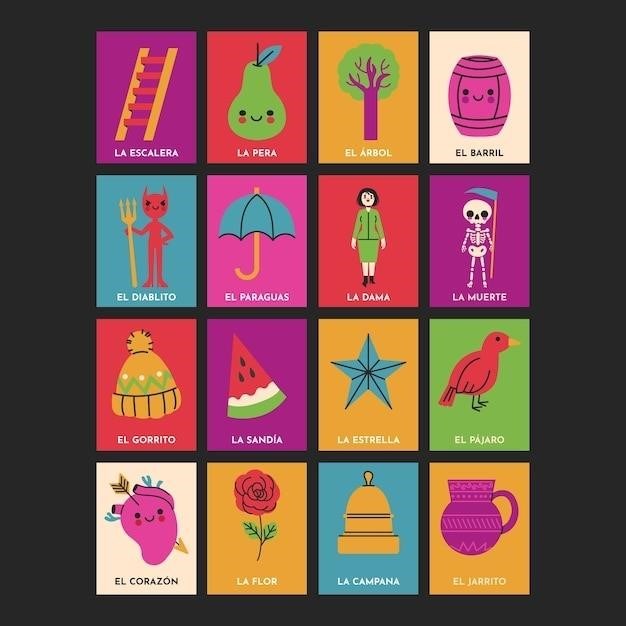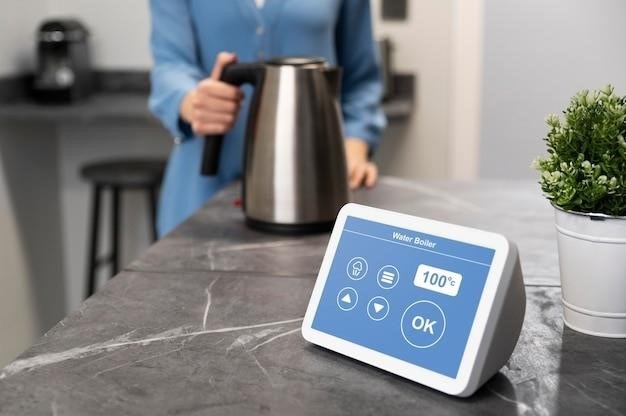Spanish Travel Phrases PDF⁚ Your Essential Guide to Communicating in Spanish
A Spanish Travel Phrases PDF can be a lifesaver for anyone planning a trip to a Spanish-speaking country. These PDFs often provide essential phrases for navigating various situations‚ from greetings and directions to dining out and handling emergencies. They are designed to help travelers communicate effectively and have a more enjoyable and authentic experience.
Introduction
Embarking on a journey to a Spanish-speaking country can be an enriching experience‚ but navigating a new language can be daunting. Fortunately‚ a Spanish Travel Phrases PDF can become your trusted companion‚ equipping you with the essential vocabulary and phrases to confidently communicate with locals and enhance your travel experience. These PDFs are meticulously designed to cater to various travel scenarios‚ offering a comprehensive toolkit for seamless interactions.
From basic greetings and expressions of courtesy to navigating transportation‚ ordering food‚ and handling emergencies‚ these PDFs provide a readily accessible guide to Spanish communication. Whether you’re a seasoned traveler or a first-timer‚ mastering these essential phrases can unlock a world of possibilities‚ allowing you to connect with locals‚ discover hidden gems‚ and create memories that will last a lifetime.
With a Spanish Travel Phrases PDF in hand‚ you’ll feel more prepared and confident to engage in conversations‚ ask for directions‚ explore local markets‚ and even delve deeper into the rich culture and traditions of the Spanish-speaking world. Embrace the opportunity to expand your horizons and connect with the heart of the language.
Essential Spanish Greetings and Phrases
Starting a conversation with a friendly greeting is the cornerstone of any interaction. A Spanish Travel Phrases PDF will introduce you to the most common and essential greetings‚ setting the tone for positive interactions. Mastering these simple phrases can make a world of difference in your interactions with locals.
Begin with a warm “Hola” (Hello)‚ a versatile greeting suitable for any time of day. For a more formal approach‚ you can use “Buenos días” (Good morning)‚ “Buenas tardes” (Good afternoon)‚ and “Buenas noches” (Good evening) depending on the time. These greetings demonstrate your respect for cultural norms and create a positive first impression.
Beyond greetings‚ the PDF will guide you through essential phrases like “Por favor” (Please) and “Gracias” (Thank you)‚ which are fundamental for expressing courtesy and gratitude. You’ll also discover phrases for introducing yourself‚ such as “Me llamo…” (My name is…)‚ and for asking how someone is doing‚ like “Cómo estás?” (How are you?). These phrases pave the way for smoother communication and foster a sense of connection with the people you encounter.
Navigating the City
A Spanish Travel Phrases PDF serves as your guide to navigating the bustling streets and hidden gems of Spanish-speaking cities. It equips you with the essential phrases for asking for directions‚ finding specific locations‚ and discovering local attractions; With these phrases at your fingertips‚ you’ll confidently explore the city and uncover its unique charm.
One of the most crucial phrases to learn is “Dónde está…?” (Where is…?). This phrase is your key to finding anything from a restaurant to a museum. You can follow it with the name of the place you’re looking for‚ like “Dónde está el banco?” (Where is the bank?). To make things even easier‚ a Spanish Travel Phrases PDF will often provide a list of common locations like “la estación de tren” (train station)‚ “el supermercado” (supermarket)‚ and “la oficina de correos” (post office).
Beyond finding specific places‚ the PDF will also equip you with phrases for understanding basic directions. “A la derecha” (To the right)‚ “A la izquierda” (To the left)‚ “Todo recto” (Straight ahead)‚ and “Siga esta calle” (Follow this street) are essential for navigating the city with ease. With these phrases‚ you’ll confidently explore the city’s streets and discover its hidden corners.

Getting Around
A Spanish Travel Phrases PDF is a valuable resource for navigating transportation in Spanish-speaking countries. From asking for directions to purchasing tickets and understanding announcements‚ these phrases can make your journey smoother and less stressful. A well-organized PDF will break down key transportation scenarios‚ offering essential phrases for each.
For example‚ you’ll find phrases for inquiring about different means of transportation‚ such as asking for the bus stop (“¿Dónde está la parada de autobús?”) or the nearest metro station (“¿Dónde está la estación de metro?”). You’ll also find phrases for buying tickets‚ like “Un billete para…” (One ticket to…)‚ which you can follow with the destination. The PDF may even include phrases for asking about timetables or frequencies‚ ensuring you can plan your journey effectively.
Whether you’re catching a bus‚ train‚ or taxi‚ a Spanish Travel Phrases PDF will provide the vocabulary you need to communicate with drivers and conductors. You’ll be able to ask for directions‚ clarify your destination‚ and pay for your fare with confidence. This way‚ you can focus on enjoying the journey‚ rather than worrying about language barriers.
Means of Transportation
A Spanish Travel Phrases PDF often includes a section dedicated to “Means of Transportation‚” equipping you with the vocabulary to discuss various modes of travel. This section is crucial for understanding the different ways to get around and for communicating with locals about your travel plans. You’ll find phrases for asking about different modes of transportation‚ like inquiring about buses (“¿Hay autobuses a…?” ― Are there buses to…?)‚ trains (“¿Hay trenes a…?” ౼ Are there trains to…?)‚ or taxis (“¿Hay taxis disponibles?” ౼ Are there taxis available?).
Furthermore‚ the PDF may include phrases for asking about the frequency of certain modes of transportation (“¿Con qué frecuencia salen los autobuses?” ౼ How often do the buses leave?)‚ or for inquiring about the cost of a specific route (“¿Cuánto cuesta un billete de autobús a…?” ― How much does a bus ticket cost to…?). This information can help you plan your journey efficiently and avoid unexpected surprises.
Beyond basic questions‚ the PDF may also include phrases for expressing your preferences‚ such as requesting a specific type of transport (“¿Hay un taxi más grande?” ౼ Is there a bigger taxi?)‚ or asking for a direct route (“¿Hay un autobús directo a…?” ― Is there a direct bus to…?). By learning these phrases‚ you’ll be able to navigate the transportation system with greater ease and confidence‚ allowing you to explore your destination freely.
At the Airport
A Spanish Travel Phrases PDF often includes a section dedicated to “At the Airport‚” providing travelers with essential phrases for navigating this busy environment. This section is crucial for communicating with airport staff‚ asking for directions‚ and handling various travel-related scenarios. You’ll find phrases for checking in (“¿Dónde está el mostrador de facturación?” ౼ Where is the check-in counter?)‚ asking for boarding passes (“¿Dónde puedo obtener mi tarjeta de embarque?” ౼ Where can I get my boarding pass?)‚ and inquiring about baggage claim (“¿Dónde está la cinta de equipaje?” ౼ Where is the baggage claim?).
Furthermore‚ the PDF may include phrases for seeking assistance from airport staff (“¿Puede ayudarme‚ por favor?” ౼ Can you help me‚ please?)‚ asking for directions to the gate (“¿Dónde está la puerta de embarque?” ― Where is the gate?)‚ and inquiring about flight delays or cancellations (“¿Hay algún retraso o cancelación?” ౼ Is there any delay or cancellation?). These phrases can help you stay informed and handle any unexpected situations that may arise during your travel.
Beyond basic communication‚ the PDF may also include phrases for asking about customs and immigration procedures (“¿Qué tengo que hacer para pasar la aduana?” ― What do I need to do to go through customs?)‚ requesting assistance with lost luggage (“He perdido mi maleta. ¿Puede ayudarme?” ― I’ve lost my bag. Can you help me?)‚ and asking for information about airport facilities (“¿Dónde está el baño?” ― Where is the bathroom?). By mastering these phrases‚ you can ensure a smoother and more stress-free airport experience.
At the Train or Bus Station
A Spanish Travel Phrases PDF can be a valuable tool for navigating train and bus stations in Spanish-speaking countries. This section typically includes phrases for buying tickets‚ asking for directions‚ and finding your platform or gate. For example‚ you might need to ask “Dónde puedo comprar un billete?” (Where can I buy a ticket?) or “Cuánto cuesta un billete a [destination]?” (How much does a ticket to [destination] cost?).
The PDF may also provide phrases for understanding departure times (“¿A qué hora sale el tren/autobús?” ౼ What time does the train/bus leave?) and platform numbers (“¿En qué andén sale el tren/autobús?” ― From which platform does the train/bus leave?). You might also need to ask for assistance finding your way around the station⁚ “Disculpe‚ ¿dónde está la plataforma [number]?” (Excuse me‚ where is platform [number]?).
Additionally‚ the PDF may include phrases for asking about luggage storage (“¿Dónde puedo guardar mi equipaje?” ― Where can I store my luggage?) and finding amenities like restrooms (“¿Dónde está el baño?” ― Where is the bathroom?) or cafes (“¿Dónde puedo encontrar un café?” ― Where can I find a cafe?). Having these phrases at your fingertips can make your journey through train or bus stations more efficient and less stressful.
At the Car Rental
A Spanish Travel Phrases PDF can be a game-changer for navigating car rentals in Spanish-speaking countries. This section will typically cover phrases for communicating with rental staff‚ from inquiring about car types and prices to understanding rental terms and conditions. For instance‚ you might need to ask “Qué tipos de coches tienen disponibles?” (What types of cars do you have available?) or “Cuánto cuesta alquilar un coche por un día/semana?” (How much does it cost to rent a car for a day/week?);
The PDF may also provide phrases for discussing insurance and additional fees (“¿Cuánto cuesta el seguro?” ౼ How much does the insurance cost? and “Hay algún cargo adicional?” ― Are there any additional charges?)‚ as well as for requesting specific features (“¿Este coche tiene aire acondicionado?” ౼ Does this car have air conditioning?). You may also need to ask questions about returning the car (“¿Dónde debo devolver el coche?” ― Where should I return the car? and “Hay alguna penalización por devolver el coche tarde?” ౼ Are there any penalties for returning the car late?).

Additionally‚ the PDF might include phrases for handling unexpected situations‚ such as a flat tire or an accident. You may need to ask “Hay algún problema con el coche?” (Is there a problem with the car?) or “Necesito hablar con un mecánico” (I need to speak to a mechanic). A Spanish Travel Phrases PDF equipped with these key phrases can help you navigate car rentals with confidence and clarity‚ making your travel experience smoother and more enjoyable.
Accommodations
A Spanish Travel Phrases PDF is a valuable resource for travelers seeking lodging in Spanish-speaking destinations. This section will likely include essential phrases for communicating with hotel staff‚ from checking in and out to requesting amenities and services. For example‚ you might need to ask “Tengo una reserva a nombre de…” (I have a reservation under the name of…) or “Me gustaría una habitación con…” (I would like a room with…).
The PDF may also provide phrases for requesting specific room features‚ such as a view (“¿Tiene una habitación con vista al mar?” ― Do you have a room with an ocean view?) or a non-smoking room (“¿Tiene una habitación para no fumadores?” ― Do you have a non-smoking room?). You might need to ask about breakfast (“¿Incluye el desayuno?” ― Does it include breakfast?) or inquire about Wi-Fi availability (“¿Hay Wi-Fi en el hotel?” ― Is there Wi-Fi at the hotel?).
The PDF could also include phrases for requesting additional services‚ such as laundry (“¿Dónde puedo lavar la ropa?” ౼ Where can I wash my clothes?) or room service (“¿Puedo pedir servicio a la habitación?” ― Can I order room service?). Additionally‚ you might need to ask for directions to nearby attractions (“¿Puede decirme dónde está el museo?” ౼ Can you tell me where the museum is?) or local recommendations (“¿Qué restaurantes me recomienda?” ― What restaurants would you recommend?). Having these phrases at your disposal can help you communicate effectively with hotel staff and make the most of your stay.
Dining Out
A Spanish Travel Phrases PDF is an essential tool for navigating the culinary scene in Spanish-speaking countries. This section will likely provide you with a range of phrases for ordering food and drinks‚ asking for recommendations‚ and communicating with restaurant staff. You might need to start with “Una mesa para dos‚ por favor.” (A table for two‚ please.) or “Me gustaría una cerveza‚ por favor.” (I would like a beer‚ please.).
The PDF may also include phrases for understanding the menu‚ like “Este plato‚ ¿cómo se prepara?” (How is this dish prepared?) or “Tiene algún plato vegetariano?” (Do you have any vegetarian dishes?). Once you’ve chosen your meal‚ you can use phrases like “El pollo con patatas‚ por favor.” (The chicken with potatoes‚ please.) or “Quiero un café‚ por favor.” (I would like a coffee‚ please.).
The PDF might also provide phrases for asking for the bill‚ like “La cuenta‚ por favor.” (The check‚ please.) or “Puedo pagar con tarjeta de crédito?” (Can I pay with a credit card?). You might even find phrases for expressing your gratitude‚ such as “Muchas gracias.” (Thank you very much.) or “Buen provecho.” (Enjoy your meal.). Having these phrases at hand can help you confidently order food‚ navigate the dining experience‚ and savor the flavors of Spanish cuisine.


















